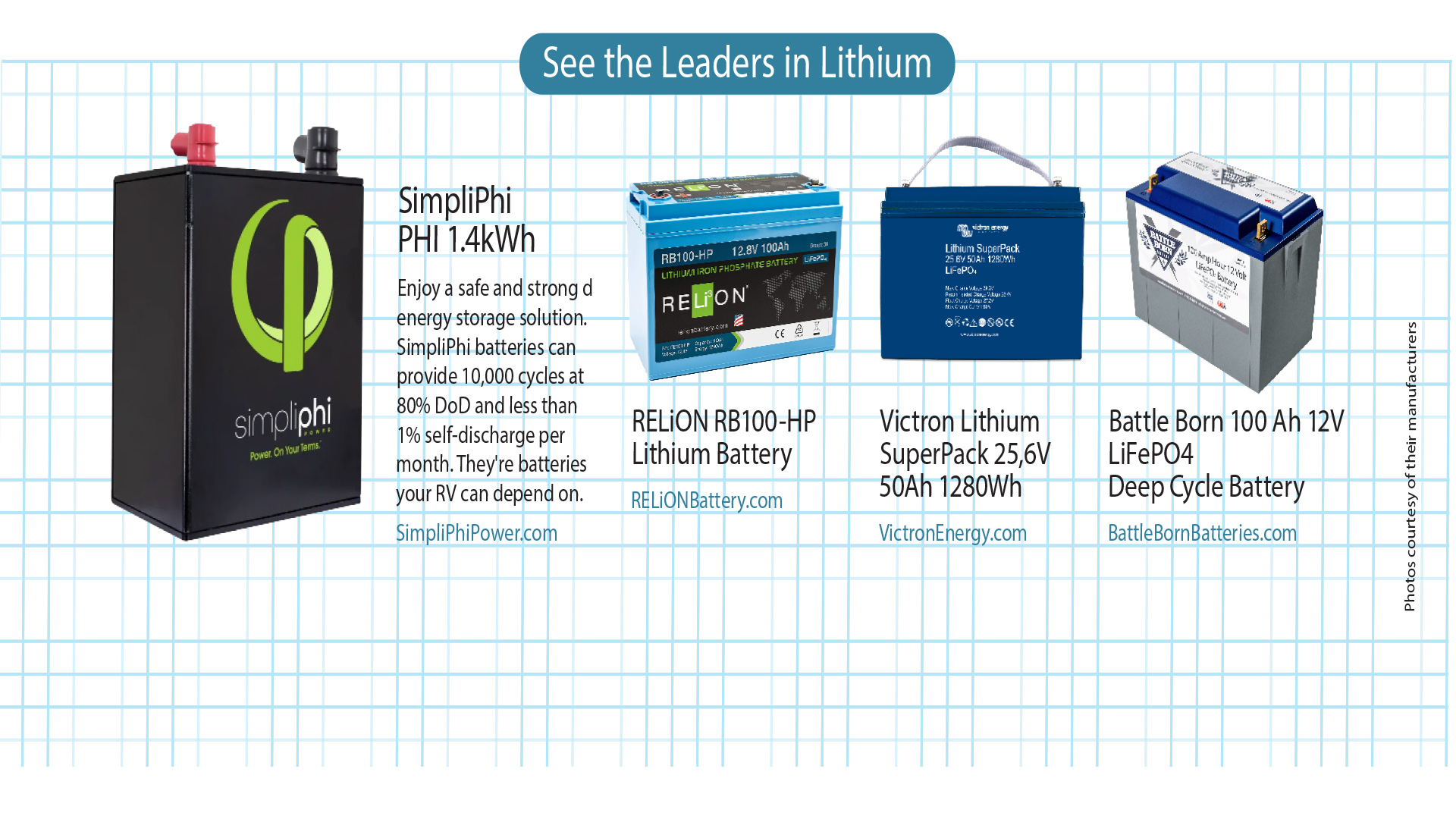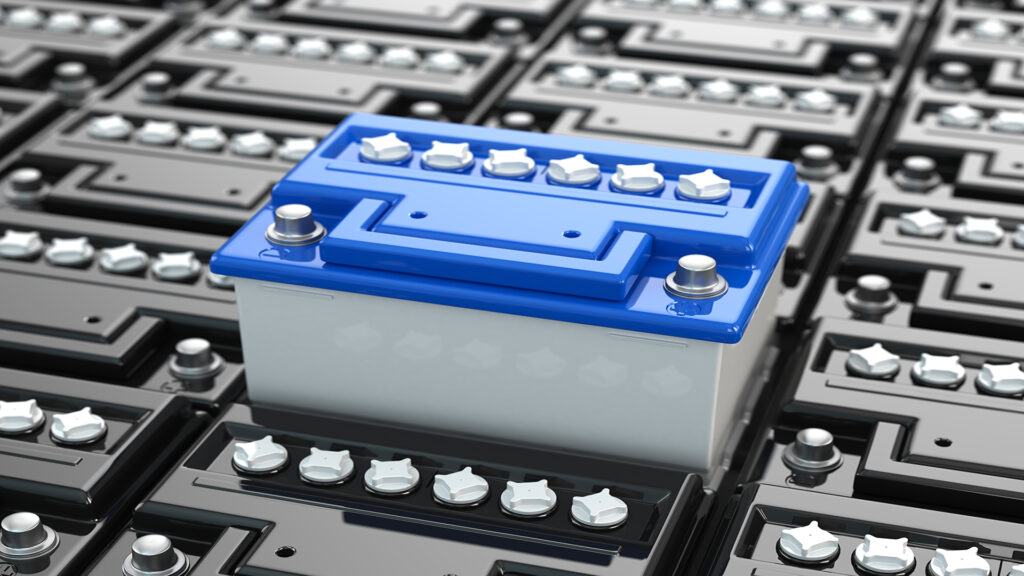Choosing the right battery can help you optimize your power and get the most juice from your RV’s squeeze.
There’s nothing quite like hitting the accelerator. Cutting the cord. Bounding out toward the boundary. Goodbye, civilization; hello, fresh air. But if we’re honest with ourselves, we never totally turn off our electronics. And we don’t really want to. (GPS much?) To even get out the door, we may have to take a little work with us. (No judgment here.) Then arriving at our campsite, we relax—while flipping on the LED lights, firing up our appliances, and charging our smart devices. To be cost-effective, we need to optimize every power generation source we have— including our batteries. If gas for a generator is scarce (or the generator runs too loud), high-performance batteries can power up your lights and appliances in silence. If solar panels are mounted, they can help charge up your batteries during the day, so you have power through the night. But how do you choose the right battery for the job? Most RVs are equipped with lead-acid batteries, but lithium batteries are increasingly popular because of their low toxicity, performance, and safety profile. Whichever you choose, here’s how to find the right option for you.
Size According to Cycle Life
This is a big one. Cycle life contributes to the number of years you can use a battery. Sizing your system to keep the depth of discharge (DoD) around 80 percent will increase the number of times you can cycle the battery. Most lithium iron phosphate (LFP) batteries can provide 6,000+ cycles, compared to lead acid, which averages about 800 with only 50 percent usable DoD or capacity. LFP batteries typically have a longer cycle life than their NMC peers (aka lithium-nickel-manganese-cobalt-oxide). More cycles equate to more years of active use, even with multiple cycles or discharges per day.
Ask About the Self-Discharge Rate
This is the rate that a battery will discharge, even when it is not being used (like when your RV is in storage for a season). Low self-discharge can eliminate the need to trickle charge batteries or to remember to throw on the battery charger at the last minute. Before storing your RV, charging up LFP batteries with a low self-discharge rate will ensure that they’ll be ready when you hit the road again.
Check the Chemistry
There are different types of lithium batteries. NMC and other cobalt-based batteries have lower cycle life, greater risk of thermal runaway and fire, and narrower operational temperature ranges. By contrast, LFP batteries, like SimpliPhi, provide a safer chemistry profile; have been proven not to pose a risk of thermal runaway, fire, and explosion; and can operate at a wider
temperature range. So, LFP batteries are considered safer and more stable in enclosed spaces.
Evaluate Energy Density
Usable capacity is the amount of actual Ah a battery can contribute to power your loads before there is a detrimental effect on its lifespan. Most lead acid batteries suggest a DoD of 30 to 50 percent. Most lithium batteries have 100 percent of their usable capacity available to power loads—with a suggested capacity usage of 80 percent to extend cycle life.
Consider Usable Capacity
Usable capacity is the amount of actual Ah a battery can contribute to power your loads before there is a detrimental effect on its lifespan. Most lead acid batteries suggest a DoD of 30 to 50 percent. Most lithium batteries have 100 percent of their usable capacity available to power loads—with a suggested capacity usage of 80 percent to extend cycle life.
Review the Charge and Discharge Rate
Lead acid batteries limit the amount of instantaneous power available to run loads. Most require that you discharge batteries over long durations to prevent decreased life, a battery with 200
Ah, can be discharged over five hours, with 40 Ahs available every hour. Lithium batteries can be discharged more quickly, allowing more Ah per hour for loads. A C/2 discharge rate (two hours) allows for half of the battery’s capacity to be used to power more loads instantaneously. This means that you can charge that battery much quicker when connected to shore power. Which translates to less downtime.
Don’t Discount a Smaller Battery
The more energy-dense a battery is, the smaller and lighter it is within the same space. With less weight, you can increase available energy per square inch. A lithium option can often reduce battery weight by half and deliver more usable power per hour. The reduced weight even improves gas mileage, getting you further down the road.


